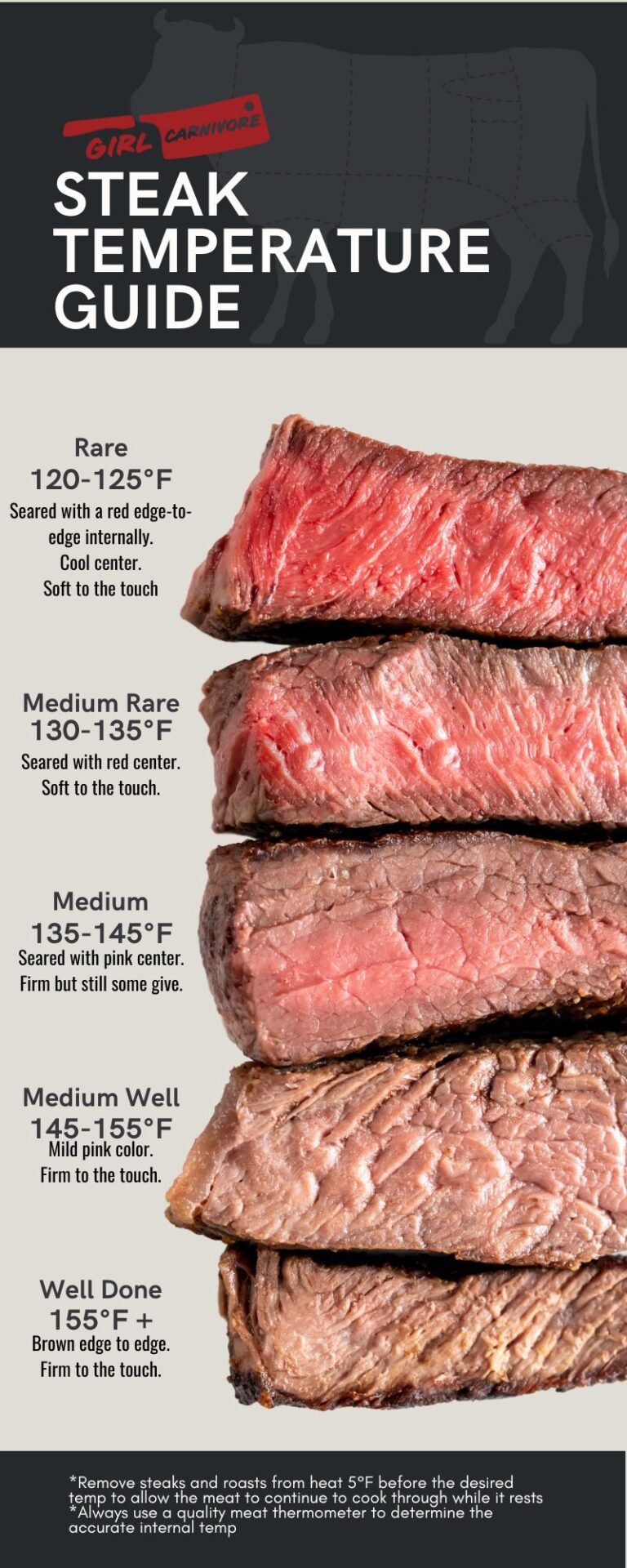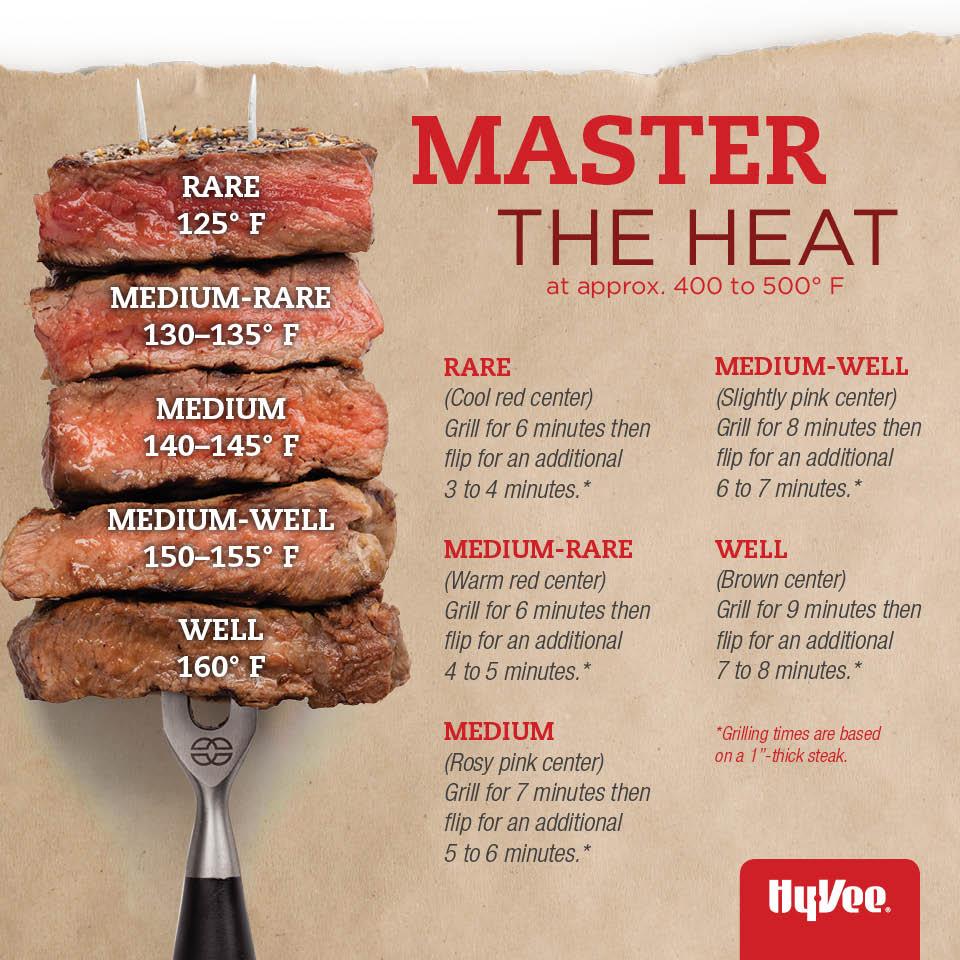Have you ever dreamt of slicing into a steak cooked precisely to your liking, a symphony of textures and flavors dancing on your palate? Achieving steak perfection isn't just about luck or intuition; it's a science, an art, a calculated mastery that begins with understanding steak doneness and wielding the power of a meat thermometer.
The pursuit of the perfect steak is a global phenomenon, a culinary pilgrimage undertaken in Michelin-starred restaurants and humble backyard barbecues alike. Whether you're in a Chicago chop house or a cozy kitchen in Kyoto, the desire for a steak cooked exactly right transcends borders and cultures. Consider this your comprehensive roadmap to steak nirvana, providing the knowledge and techniques needed to consistently achieve culinary excellence.
| Category | Details |
|---|---|
| Topic | Steak Doneness |
| Key Aspects | Temperature, Appearance, Texture, Safety |
| Relevance | Applicable to both professional chefs and home cooks |
| Tools Needed | Meat thermometer |
| Additional Information | Resting the steak, seasoning considerations, carryover cooking |
| Reference Website | Serious Eats - How to Cook a Steak |
The benchmark for many steak enthusiasts is the medium-rare doneness. It is the darling of fine-dining establishments and discerning home cooks alike. Often the default served in restaurants unless otherwise specified, medium-rare represents an exquisite equilibrium: a tender, flavorful profile highlighted by a warm, ruby-red center gracefully yielding to a delicate blush of pink.
Elevating the internal temperature a notch lands us in medium territory, typically residing between 145F and 150F (63C to 66C). At this stage, the steak showcases a uniformly warm pink center, complemented by a subtly pink exterior. This presents a visually appealing and texturally satisfying contrast. The inner landscape transitions from red to a consistent pink hue, while the edges acquire a tantalizingly browned crust.
While visual cues offer hints, they should not be solely relied upon. This is where the unsung hero of steak cookery enters the scene: the meat thermometer. The most seasoned chefs swear by it. A meat thermometer acts as your unwavering guide, ensuring precision and mitigating the risks of guesswork. Visual assessments, though helpful, can be deceptive, leading to undesirable outcomes.
While target temperatures remain consistent across different steak cuts, cooking durations are more malleable, influenced by factors like cut, thickness, and overall size. This reinforces the indispensable role of the meat thermometer. By vigilantly monitoring the steak's core temperature, you can confidently achieve repeatable results.
- 9kmovies Amp Movie Piracy Is Free Streaming Worth The Risk Guide
- Hdhub4u Explored Is Free Movie Downloads Too Good To Be True
To demystify the process and provide a clear path to steak mastery, here's a detailed breakdown of steak doneness:
Rare:
- Internal Temperature: 120F (49C)
- Appearance: Distinctly red center
- Notes: To achieve this, remove the steak from heat when it registers 115F and allow it to rest for approximately 5 minutes before serving. This brief resting period allows the temperature to equilibrate, reaching the desired 120F.
Medium Rare:
- Internal Temperature: 130F to 135F (54C to 57C)
- Appearance: A warm, red center gracefully transitions to dark pink edges.
- Notes: Often considered the pinnacle of steak cookery, medium-rare strikes an exquisite balance between tenderness and flavor. Achieving this ideal requires slightly longer cooking times to allow the steak's internal temperature to reach this sweet spot.
Medium:
- Internal Temperature: 135F to 145F (57C to 63C)
- Appearance: Exhibits a warm pink center, denoting a juicy and tender consistency. The once-red core disappears, replaced by a consistent pink hue throughout.
- Notes: The United States Department of Agriculture (USDA) recommends a minimum internal temperature of 145F, followed by a 3-minute resting period for optimal safety and quality.
Medium Well:
- Internal Temperature: 150F to 155F (66C to 68C)
- Appearance: Predominantly pink, with only faint traces of red remaining.
Well Done:
- Internal Temperature: 160F+ (71C+)
- Appearance: Absence of any pink coloration.
- Notes: While considered the safest option, many find this level of doneness compromises flavor and leads to a drier texture.
For a steak cooked to medium doneness, the ideal internal temperature hovers around 140F, resulting in a warm, pink center and a noticeably firmer texture. To achieve this, remove the steak from the heat source when it registers 136F, allowing for carryover cooking during the resting phase.
Carryover cooking, that subtle yet significant phenomenon, dictates that a steak's internal temperature continues to rise even after it's removed from the heat. Therefore, it's crucial to strategically remove the steak a few degrees shy of your target temperature. Allowing the steak to rest allows the flavorful juices to redistribute evenly throughout the meat, culminating in a more tender and palatable final product.
To provide a comprehensive reference, consider the following table, offering granular insights into steak doneness temperatures:
| Doneness | Internal Temperature (F) | Internal Temperature (C) | Appearance | Texture | Notes |
|---|---|---|---|---|---|
| Rare | 120-130 | 49-54 | Bright red center | Soft and yielding | Safe to eat, remove from heat at 115F and rest |
| Medium Rare | 130-140 | 54-60 | Warm, red center with dark pink edges | Tender and juicy | Most popular doneness, "holy grail" for some |
| Medium | 140-150 | 60-66 | Warm pink center | Slightly firmer, still tender | Good balance of flavor and texture |
| Medium Well | 150-160 | 66-71 | Slightly pink | Firmer | Less juicy than medium |
| Well Done | 160+ | 71+ | No pink | Firm, can be dry | Safest temperature, but often less flavorful |
Concerns about the safety of consuming rare steak often surface, and rightfully so. Safety hinges on several critical factors: the meat's origin, handling practices, and the cooking methodologies employed. These specified temperatures serve as benchmarks, ensuring that any potentially harmful bacteria are eradicated, rendering the steak safe for consumption. However, it's crucial to note that rare steak remains safe to consume provided its core temperature reaches at least 120F.
Before embarking on the cooking process, allow your steak to sit at room temperature for a period of 30 minutes to an hour. This seemingly simple step facilitates a more accurate internal temperature reading. During this time, generously season the steak with salt and pepper, allowing the flavors to permeate the meat.
Seasoning constitutes a cornerstone of steak cookery, and the type of salt wields considerable influence. Steer clear of standard table salt and iodized varieties, as they can impart a metallic tang. After cooking, patiently allow the steak to rest for several minutes. This seemingly passive step allows the juices to redistribute, culminating in a more succulent and flavorful dining experience.
The journey to steak mastery is a continuous exploration. Embrace experimentation: explore different cuts, meticulously observe temperature variations, and boldly venture into uncharted techniques. Armed with patience, diligent practice, and a dependable meat thermometer, you will undoubtedly ascend to the ranks of culinary artisans, crafting steak masterpieces within the confines of your own kitchen. It's about the journey to mastering steak doneness, not just reaching the destination.
- 9xmovies Unveiled Is Free Movie Streaming Worth The Risk 2024
- Bill Oreilly Love Age Relationships What We Know Now


